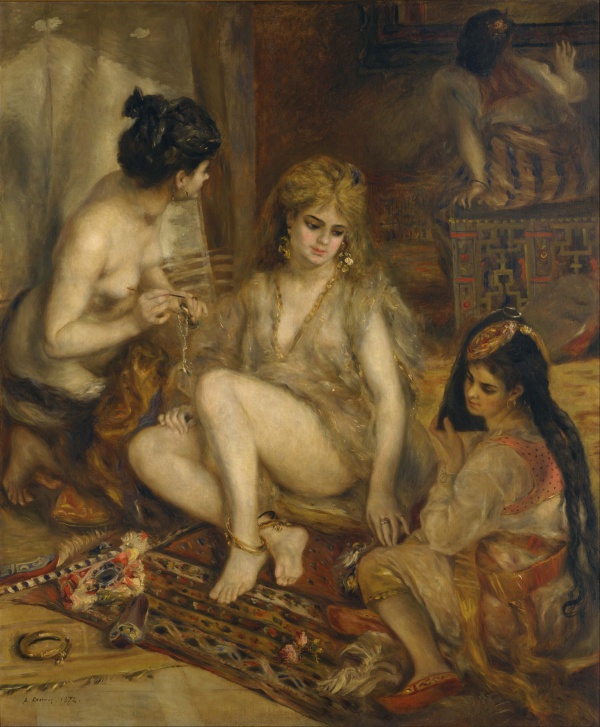Facts About Parisian Women in Algerian Costume (The Harem)
Pierre-Auguste Renoir's painting, "Parisian Women in Algerian Costume" completed in 1872, is also known as "Interior of a Harem in Montmartre." This artwork was Renoir's homage to Eugène Delacroix's renowned piece, "Women of Algiers in their Apartment." Unfortunately, it was rejected by the 1872 Paris Salon and later sold for a modest sum. Today, the painting resides in the National Museum of Western Art in Tokyo.
In the 1870s, Renoir's style was heavily influenced by Delacroix, marking a departure from the realism characteristic of Courbet and Manet's works. This painting attempts to capture the vibrant colors and dramatic flair typical of Orientalist art. Despite its title, the painting does not merely depict Parisian women in costume; rather, it presents a stylized and somewhat romanticized view of Algerian culture. The composition is unique, with figures arranged diagonally, and the picture plane tilted to create a sense of movement.
The scene features women in various states of undress, suggesting a brothel with an oriental theme. One of the women is believed to be Renoir's lover, Lise Tréhot. Interestingly, Renoir himself was not particularly fond of this painting and referred to it dismissively as a "grande machine." After being sold for a nominal amount, the painting changed hands several times before ultimately finding its home in Tokyo.
"Parisian Women in Algerian Costume" stands out in Renoir's body of work for its exploration of Orientalist themes and its tribute to Delacroix.
